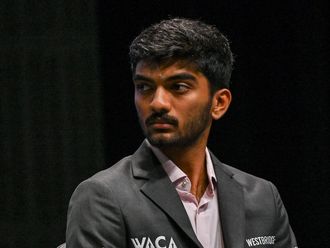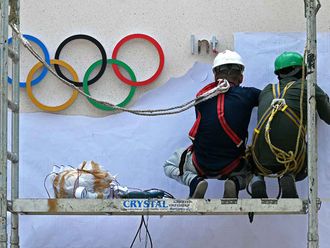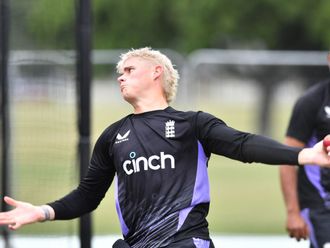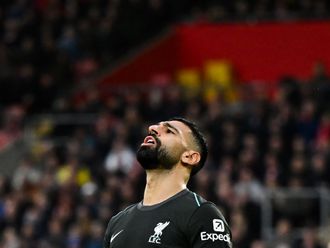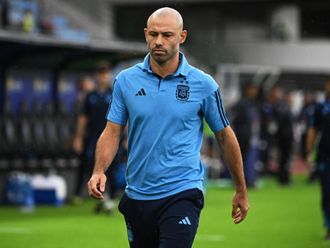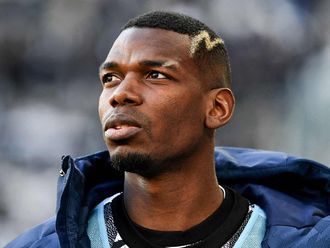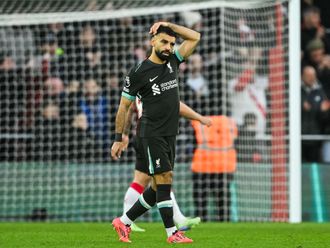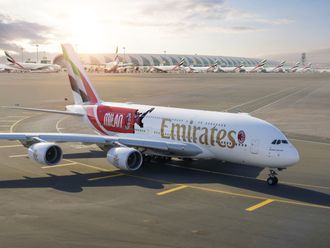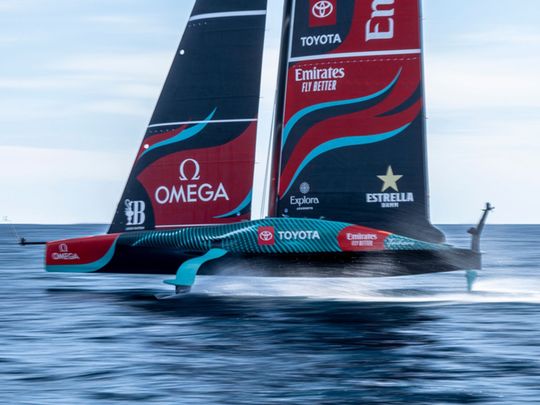
Barcelona: Ineos Britannia skipper Ben Ainslie believes the British team face the “ultimate challenge” in trying to pry a first America’s Cup away from double defending champions Emirates Team New Zealand in Barcelona.
The 37th America’s Cup best-of-13 series begins on Saturday off the coast of the Catalan capital with the four-time winners narrow favourites to retain the trophy.
“It’s a really proud moment for us as proud British, we’ve got a very proud sporting and maritime heritage, and the America’s Cup is the one thing that has always been missing from our trophy cabinet,” Ben Ainslie told a news conference on Friday.
“So, this is an incredible opportunity for our team, but at the same time we are coming up against incredible defenders, who are going for a third win in a row, and we know that’s the ultimate challenge.”
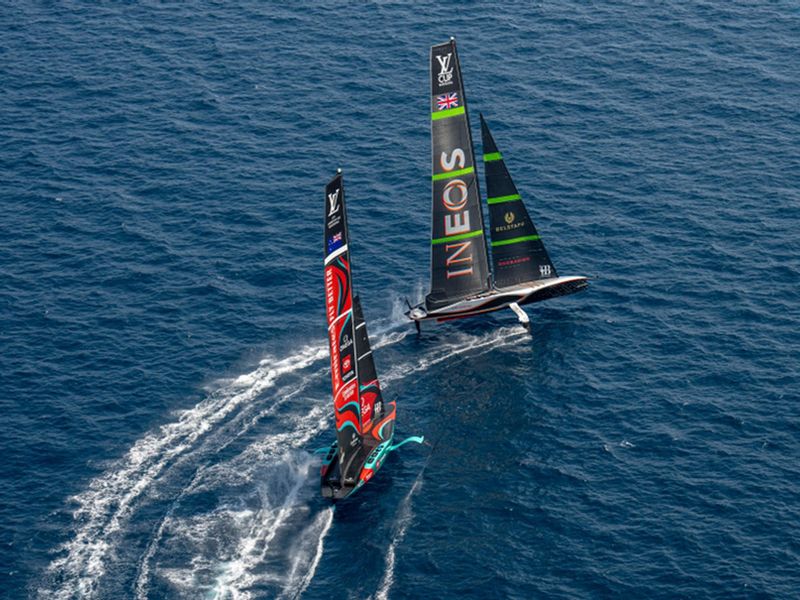
Since participating in the final preliminary regatta and Louis Vuitton Cup round robin a month ago, the double defending champions have been sitting out and watching on as the British team moved from strength to strength.
“I think the intrigue of the America’s Cup is that you don’t really know until you line up for the first start but we’re really happy with the package that we’ve put together,” said New Zealand skipper Peter Burling.
Ineos started in Barcelona seemingly behind Italian side Luna Rossa Prada Pirelli and US team New York Yacht Club American Magic, but improved rapidly through the round robin of the challenger selection series.
Aiming to win first title
They became the first British team in 60 years to reach the America’s Cup and are aiming to win it for the first time ever.
The world’s oldest international sporting trophy began with a race around the Isle of Wight in 1851, won by New York Yacht Club, and in the 173 years since it began off their shores Britain has not been able to lift the trophy.
Their impressive 7-4 victory over Luna Rossa in the Louis Vuitton Cup final earlier in October showed how far they have come, after the Italians thrashed them 7-1 in the 2021 challengers final in Auckland.
Billionaire British businessman and Manchester United minority owner Jim Ratcliffe is the chief backer behind Britannia, and his investments have started to pay dividends with a first return to the America’s Cup since 1964.
The Royal Yacht Squadron first hosted the challenge putting up 15 yachts to take on New York Yacht Club’s America in a fleet race around the Isle of Wight off the south coast of England.
Queen Victoria and the future Edward VII turned up on August 22, 1851 to watch America, captained by Richard Brown, overcome a broken jib boom to come home 18 minutes before the second boat.
The RYS #100 Cup was renamed the America’s Cup in honour of the winner although fans often refer to it as The Auld Mug.
1870: First defence
The owners of America, who soon sold the boat, held on to the trophy until 1857 when it was donated to the New York Yacht Club with a ‘deed of gift’, a strict set of rules to govern future races.
The NYYC issued an invitation for challenges later that year but it was not until 1870 that James Ashbury, representing the Royal Thames Yacht Club, took it up.
Eighteen yachts took part in a fleet race with Franklin Osgood’s Magic comfortably seeing off Ashbury’s Cambria. The Cup would stay in New York until 1983.
1970: Multiple challenge
Until 1970, there had been a single challenger but that changed when Australia, Britain, Greece and France all issued separate challenges.
After the French got lost in the fog, it was Frank Packer’s Australian boat Gretel II that emerged as the challenger to Intrepid, skippered by Bill Ficker. The idea of a challenger series - manifested today in the Louis Vuitton Cup - became the norm.
The America’s Cup itself was a prickly contest, marred by protests and some would say sharp practice, which ended with a 3-1 win for the Americans and Packer insisting: “Protesting to the New York Yacht Club is like complaining to your mother-in-law about your wife.”
1983: End of an era
The Australians continued to be the main threat to the Americans with boats backed by businessman Alan Bond losing in 1974, 1977 and 1980, each time learning a little bit more about how to win.
In 1983, flying the pennant of the Royal Perth Yacht Club, he financed Australia II with its revolutionary and secretive winged keel in an another acrimonious series against Dennis Conner’s Liberty.
With some outstanding tactical racing, Conner had opened up a 3-1 lead and needed just one more to retain the cup. But Australia II, skippered by John Bertrand, hit back to win the next two races and set up ‘The Race of the Century’.
On September 24, 1983 Bertrand steered Australia II across the finish line 41 seconds ahead of Liberty, becoming the first successful challenger in 132 years.
1988: New Zealand’s first win
The first time New Zealand ‘won’ the America’s Cup was in 1988 when the Mercury Bay Boating Club, based out of the back of a car, challenged San Diego Yacht Club.
The challege had been made under the ‘deed of gifts’ rule dating back to 1852 and the courts ordered San Diego, who initially rejected it, to accept.
On the water Stars & Stripes H3, with Dennis Conner once again at the helm, won easily with their catamaran outclassing Mercury’s KZ-1 monohull.
The courts ruled, however, that it was a gross mismatch and not in the spirit of friendly competition, awarding the cup to New Zealand. On appeal, however, that decision was overturned and the cup stayed in San Diego.
New Zealand had their revenge in 1995 when Peter Blake’s Black Magic trounced Conner’s Young America 5-0 to take the cup back down under.
Battle of the helmsmen
The second generation of AC75 foiling boats has reduced the differences between the teams, with little to choose between both vessels.
Ineos have worked with the Mercedes Formula One team to help perfect their boat, while New Zealand’s is an evolved version of the craft they used in their 2021 triumph.
The similarities between the boats increases the focus on the sailors themselves, with some pitching the America’s Cup as Ineos’s four-time Olympic gold medallist Ainslie against New Zealand’s Burling.
The latter was the youngest ever 49er Olympic gold medal skipper at 25 at the Rio de Janeiro games in 2016.
Burling is also the youngest helmsman to win the America’s Cup, winning it in 2017 at 26, and then skippering the team to a superb title defence four years later.
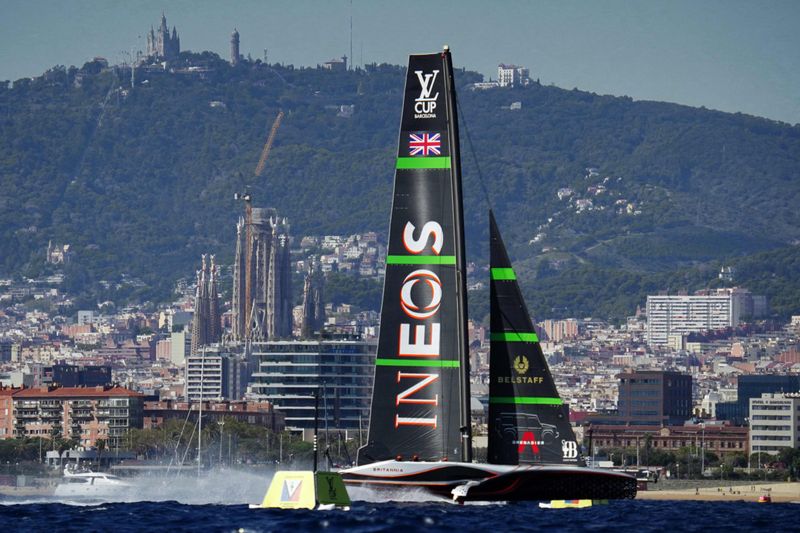
In August Ainslie had a Rolex watch stolen at knifepoint in Barcelona but otherwise has enjoyed the last few months, as he closes in on his dream of winning the “auld mug” for Britain, having done so once already with Oracle Team USA in 2013.
Astonishing comeback
Ainslie helped the Americans turn around an 8-1 deficit to beat New Zealand 9-8, winning nine consecutive races to complete an astonishing comeback.
“I’ve been really fortunate to have won the cup before, but not with Britain, but it’s not about me, it’s about the team,” said Ainslie.
“We’ve been going for ten years now on this mission to get ourselves into the final and what a great opportunity — we’re going to give it everything we’ve got.”
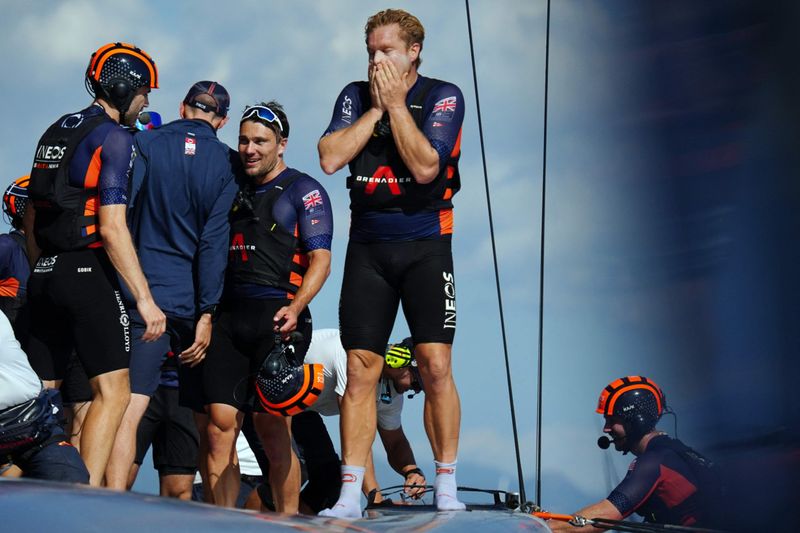
Countermoves
For the first time these teams are using two helmsmen each, and Briton Dylan Fletcher is Ainslie’s co-skipper, while Nathan Outteridge is operating port-side for the defender.
“We’ve been watching pretty closely what Ben, Dylan, and the team have been up to, trying to study their moves and countermoves,” said Outteridge.
“I think what we’ve seen in the racing is these boats are incredibly close in terms of performance and the start is going to be really critical.”
Racing begins on Saturday and will be wrapped up on or before October 21.


